
22 Days Sichuan Birding Tour with Mount Emei and Jiuzhaigou
Sichuan is a paradise for birdwatchers and nature enthusiasts, celebrated for its stunning landscapes and rich biodiversity, including Giant Pandas and numerous endemic bird species. This 22-day tour focuses on exploring diverse habitats—from lush farmlands to the rugged Tibetan Plateau—while immersing you in local culture and renowned cuisine. Expect to encounter breathtaking scenery and experience genuine hospitality as you discover Sichuan’s unique avifauna.
Tour Highlights
- Mount Emei: Experience stunning landscapes and diverse birdlife on one of China’s sacred mountains.
- Jiuzhaigou National Park: Explore this UNESCO World Heritage site, famous for its colorful lakes and rich biodiversity.
- Wawu Shan: Discover unique bird species in an untouched mountain environment.
- Tangjiahe Reserve: Birdwatch in a critical habitat for Giant Pandas and various endemic species.
- Cultural Experiences: Enjoy local cuisine, hotpot dinners, and visits to historical sites like Sanxingdui.
Itinerary Day By Day:
Day01 Arrival Chengdu
Today you arrive in Chengdu, the capital of Sichuan Province. Greeted and received by your local guide and escorted to your hotel in downtown Chengdu. The rest of day is at your own disposal. Overnight at Buddha Zen Hotel
Day02 Chengdu – Mt.Emei (B, L, D)
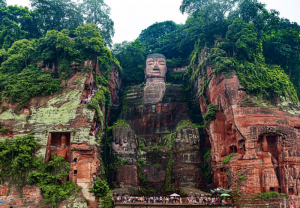
In the morning you depart for Mt.Emei (Emeishan). Mount Emei (Emeishan) lies 170km southwest of Chengdu is one of the four mountain ranges in China that Buddhists consider sacred. Together with Leshan Giant Buddha, Mt. Emei was included in the UNESCO world heritage list in 1996. The mountain stretches more than 200 kilometers from south to north. Its main peak, Wanfo Summit, is 3,099 meters above sea level. Since ancient times Emei Mountain has been described as “Beauty Under Heaven”. Temples were built as early as the Eastern Han Dynasty (25-220) and Buddhism was introduced to the mountain during the Jin Dynasty. In the Ming and Qing dynasties there were more than 150 temples on it. Mt. Emei draws the most attention for its 154-kilometer spread, attracting tourists since ancient times with phenomenal views all the year round. You will take a vehicle up the mountain to LeiDongPing from where you walk one stone stairs ascending to the Golden Summit (Jinding). And birding during the hiking. Overnight at Jinding Grand Hotel
Day03 Mt.Emei (B, L, D)
You will enjoy a splendid sunrise on the Golden Summit. Then you carry on birding from Leidongping to Xixiangchi (Elephant Bathing Pool). Overnight at a local lodge in the temple
Day04 Mt.Emei (B, L, D)
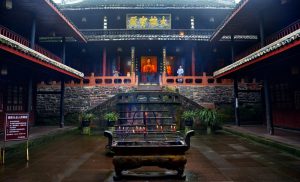
You will have a day hiking and birding to Wannian Temple area. The dense forests on the mountain offers fantastic birding opportunities. The avifauna here is very different to that experienced earlier and new species should include Chinese Bamboo Partridge, which is much easier to hear than to see, Hodgson’s Hawk Cuckoo, the endemic Chinese form of Blue-throated Flycatcher, Vivid Niltava, Mt. Emei Leaf and Sulphur-breasted Warblers, the recently described Plain-tailed Warbler, Dusky Fulvetta and Golden Parrotbill. Overnight at a local lodge in the temple
Day05 Mt.Emei (B, L, D)
This day you will watch birds at lower altitude. You start the hiking from Wannin Temple and find birds through Pleasant Sound Pavilion and One-Thread-Sky area descending to Wuxianggang. During the way, you will walk to the bamboo forest at the lakeside beneath Pleasant Sound Pavilion area. Take a tour bus back to hotel at the mountain foot. Enjoy a fine dinner at a good restaurant. Overnight at Hongzhushan Hotel
Day06 Mt.Emei – Wawu Shan (B, L, D)
Morning walking to Baoguo Temple and find birds in the woods. Then you will be transferred to Wawu Shan (Mountain). Birding stop will be made during the course of drive. Overnight at a local lodge
Day07 Wawu Shan (B, L, D)
Have a full day bird explore on the mountain. We take a cable car to the top of the mountain. Right at the mountain top we can find Gray-hooded and probably Sichuan Treecreeper. At lower area the species will be olden Parrotbills, Emei Leaf-Warbler, and unforgettable Lady Amherst’s Pheasants etc. Enjoy a great time on the mountain.
Day08 Wawu Shan – Baoxing (B, L, D)
This morning we will find birds of Rusty Laughingthrush, Silver Pheasant, Aberrant Bush Warbler, Ashy-throated Parrotbill, Bianci’s Warbler and Brown-flanked Bush Warbler. After that we will drive to Baoxing. There are photo opportunities at the mountain valley along the green Qing Yi River. Later of the day you will reach Baoxing, a mountainous town in Giant Panda’s natural habitat. Overnight at a local lodge
Day09 Baoxing – Rilong (B, L, D)
This morning we shall drive some 20km to Fengtongzhai Natural Preserve for birds. Keep going further along the main road we get to JiaJin Shan (mountain) to find some alpine birds in the forests. Later of the day we drive to Rilong below the Mt.Four Sisters. Overnight at a local hotel
Day10 Rilong (B, L, D)
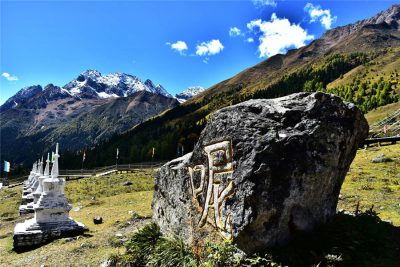
Drive and walk in the Double Bridge Valley (ShuangQiao Gou). Here at Mt.Four Sisters, we might find Hymalayan Grandala, Yellow-billed Chough, Black Redstart, Snow Pigeon, Pale-rumped Warbler and Hodgson’s Pipit. And with luck, we might also find some beautiful mammals such Red Panda and Takin etc. Time permitting, we drive upwards to Balang Shan to find Snow Partridges, Tibetan Snowcocks, Lammergeier, Red and Yellow-billed Chough, and a few other pheasants. Overnight at a local hotel
Day11 Rilong – Hongyuan (B, L, D)
Continuing north, we will spend the morning and early afternoon searching for birds on Mengbi Shan. Birds we might find today include Collared Grosbeak, Eurasian Crag Martin, Hodgson’s Redstart, Himalayan Red-flanked Bluetail, Blood Pheasant, Eurasian Treecreeper, Crimson-browed Finch and Tibetan Siskin etc. Overnight at a local hotel
Day12 Hongyuan – Rui’ergai (B, L, D)
Drive on grasslands to Rui’ergai and birding on the way, seek Black-necked Cranes nearby Rui’ergai. We will constantly scanning for more specialties such as comical Hume’s Groundpecker, hulking Tibetan Larks and both White-rumped and Rufous-necked Snowfinches. Our destination will be Ruo’ergai, a relatively modern Tibetan settlement right in the heart of some exciting plateau birding. In the afternoon we will head off to search the surrounding steppes for parties of majestic Black-necked Cranes and, lucky enough, we might also find a Saker Falcoln or Chinese Grey Shrike. Overnight at a local hotel
Day13 Rui’ergai – Jiuzhaigou (B, L, D)
We will leave the plateau this morning and take a minor road over the spectacular Lamaling pass to Jiuzhaigou. We shall make numerous stops to search for species such as Sichuan Jay, Daurian Jackdaw, Snowy-cheeked Laughingthrush and Pink-rumped Rosefinch. Overnight at hotel outside Jiuzhaigou National Park
Day14-15 Jiuzhaigou (B, L, D)
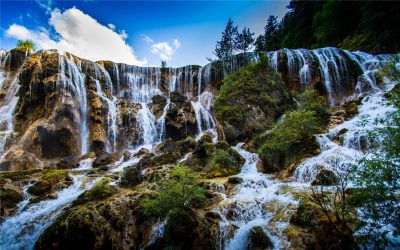
Enjoy two full days tour in Jiuzhaigou National Forest Park for birds and enjoy natural sceneries of mountains, waters and Tibetan village array. We will use the shuttle bus services to explore a number of the better birding sites. Rufous-headed Robin is virtually unknown away from here, so we will spend time searching an area of mixed forest for this fabulous songster. Other sought-after species include Chinese Nuthatch, Rusty-breasted and Sooty Tits, and the noisy Spotted Laughingthrush. We will venture back into the coniferous forest on another day to search for Chestnut-throated Partridge, Chinese Grouse, Three-toed Woodpecker, the enigmatic Sichuan Wood Owl, Himalayan Orange-flanked Bush Robin, Snowy-cheeked Laughingthrush and White-winged Grosbeak. we will also look for the tiny Spectacled Parrotbill. Overnight at hotel outside Jiuzhaigou National Park
Day16 Jiuzhaigou – Wanglang (B, L, D)
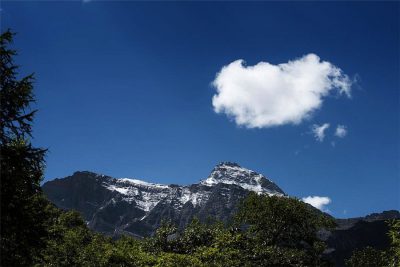
Drive to Wanglang Nature Reserve and birding on the way. Wanglang Nature Reserve, established in 1963 by the Sichuan Forestry Bureau, is located in the Minshan Mountains in some of China’s most important panda habitat. Wanglang, whose purpose is to protect the giant panda and its habitat, and the 10 other nearby reserves in remote areas of northern Sichuan are critical to the continued survival of the giant panda. Overnight at a local lodge
Day17 Wanglang (B, L, D)
A full day birding in Wanglang Natural Reserve. Most of the birding was from 2,500m to almost 3,000m at the Bai Xiong Gou boardwalk, which is near the Reserve’s boundary with Jiuzhaigou. The habitat includes a lot of bamboo under pines, and some open logged-out areas with scrub. Min Shan Chinese endemics include Sooty Tit, Rusty-breasted (Pere David’s) Tit, Snowy-cheeked Laughingthrush and Spectacled Parrotbill. Overnight at a local lodge
Day18 Wanglang – Tangjiahe (B, L, D)
Head east to Tangjiahe and birding at Tangjiahe Natural Reserve in the afternoon. Established in 1978, Tangjiahe Nature Reserve covers an area of 40,000 hectares. Located in Guanhu Town, Qingchuan County of Guangyuan City, on the northern edge of the Sichuan Basin, on the north-western side of Longmen Shan and in the southern foothills of the Motian Ling mountains. It is highest in the north-west and lowest in the south-east. The vegetation shows prominent vertical zonation, with evergreen broadleaf forest (below 1,600 m), mixed evergreen and deciduous broadleaf forests and conifers (1,600-2,100 m), mixed broadleaf-coniferous forest (2,100-2,400 m), subalpine coniferous forest (2,400-3,600 m) and alpine scrub and meadows (above 3,600 m). The reserve was named a Grade I nature reserve by World Wildlife Federation, making it one of the hotspots for the protection of global biodiversity. Overnight at a local lodge
Day19 Tangjiahe (B, L, D)
Enjoy a day birding at Tangjiahe. Most of Tangjianhe’s birding is between 1500m and 2000m. Endemics include Golden Pheasant and Slaty Bunting. Rusty-throated Parrotbill was rediscovered at Tangjiahe after an absence of twenty years in June 2007. Overnight at a local lodge
Day20 Tangjiahe – Chengdu (B, L, D)
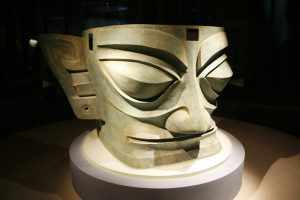
We leave in the morning for Chengdu and on the way we make a culture visit at Sanxingdui Museum. Sanxingdui is the name of an archaeological site and its deduced culture in China, now believed to be the site of an ancient Chinese city. The Sanxingdui Ruins, lying at Nanxing Town, Guanghan City in the north of the Chengdu plains, Sichuan is 8 kilometers to the west part of Guanghan proper. Sanxingdui archaeological site has gained much renown throughout the world as the center of a prehistoric culture with a sophisticated bronze technology. These people shared the Sichuan Basin with elephants and rhinoceros 3,500 years ago. The bronze masks, golden bird images and jade artifacts which they crafted and buried in the sacrificial pits of Sanxingdui are enigmatic and unique. Later of the day you will be transferred back Chengdu, and on arrival you can enjoy a hotpot dinner in Chengdu. Overnight at Buddha Zen Hotel
Day21 Depart Chengdu (B)
Transferred to airport for your departure flight. End of the Birding in Sichuan.
Service Included:
- Admission fees for all of the sightseeing spots listed in the itinerary;
- Meals as listed in the itinerary;
- Hotels as listed in the itinerary;
- Private English-speaking tour guide;
- Private vehicle for transfers & sightseeing with skilled driver;
- Service charge & government taxes;
- Luggage transfers between airports and hotels;
- Domestic train tickets of soft sleeper.
Service Excluded:
- Any arrival and departure international airfares or train tickets;
- Chinese visa fees;
- Excess baggage charged by Airlines;
- Single room supplement;
- Tips to guides and drivers;
- Personal expenses and gratuities to service staff;
- Personal travel accident insurance;
- All optional programs.















